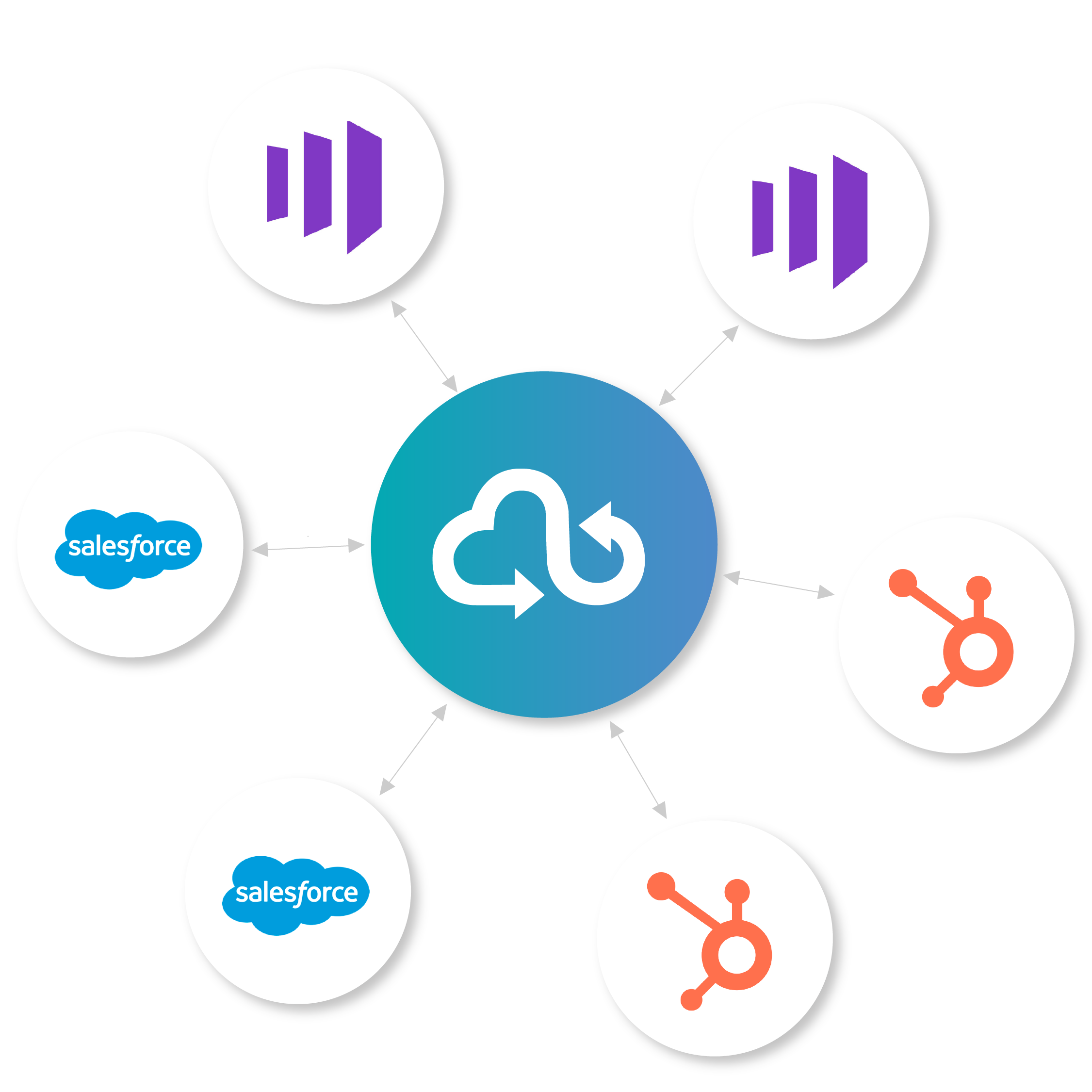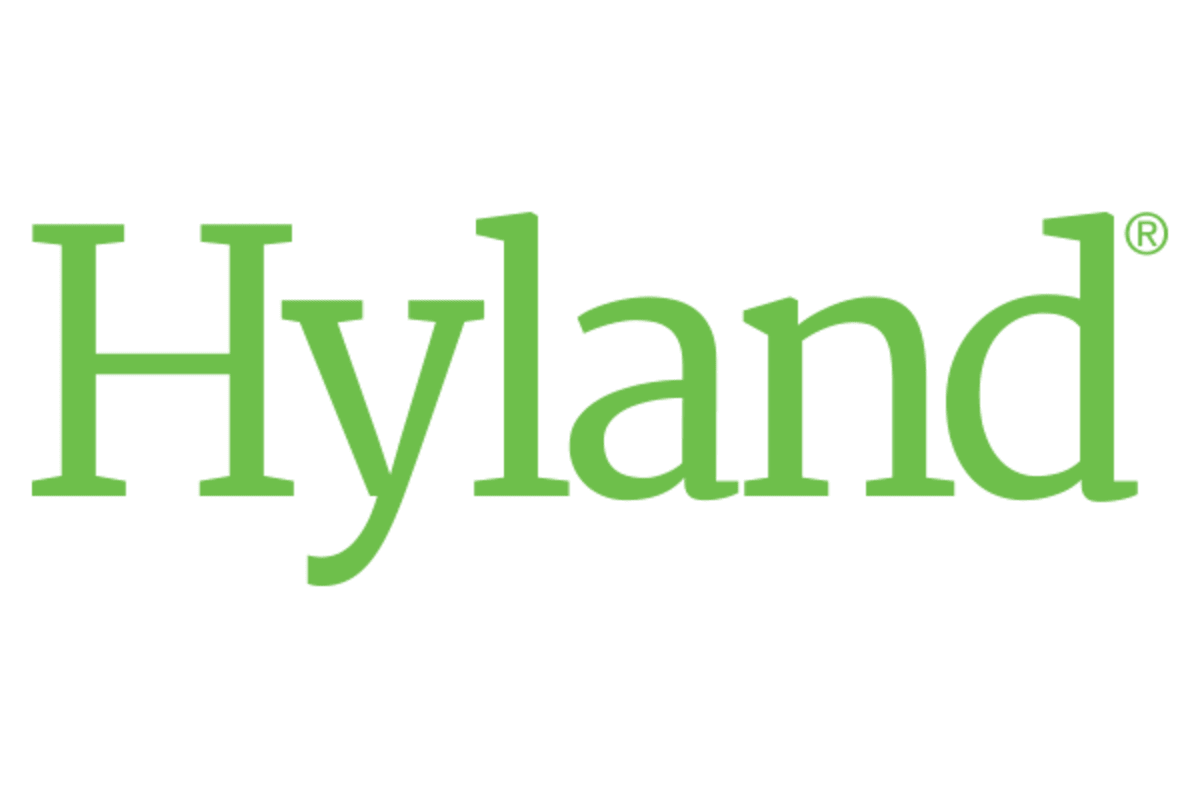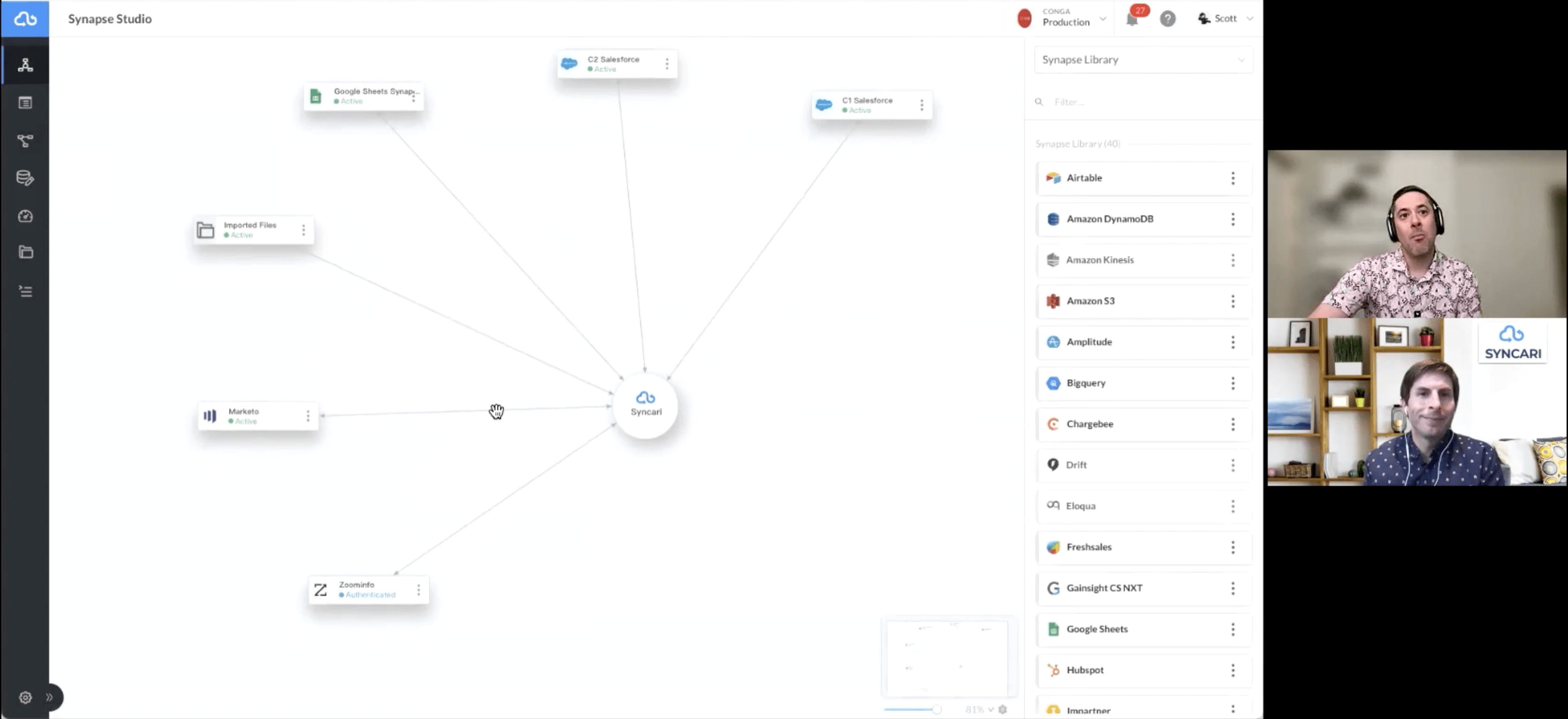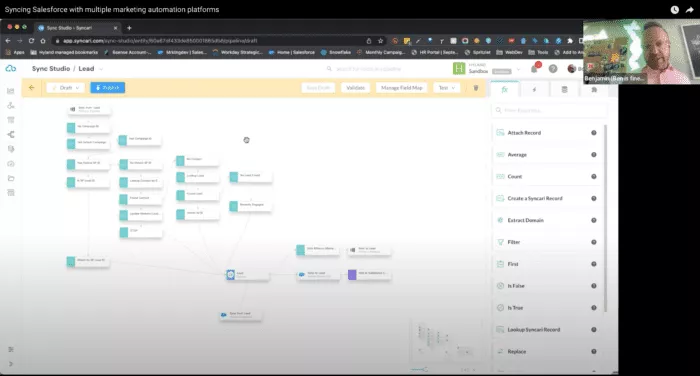
Unify Multiple CRMs and MAPs
Syncari is the only scalable solution for managing complex and redundant CRM and marketing automation stacks.

Syncari is the only scalable solution for managing complex and redundant CRM and marketing automation stacks.




Instead of trying to migrate or use point-to-point integrations to cobble together multiple CRMs, you could have unified customer data in weeks.
Don’t spend months, millions, and still miss targets. End the mess.
Their case study explains it all. But to see Syncari in action, watch the first episode of Coffee With Customers — Conga’s Scott Merselis walks through how they unified two Salesforce instances.

Check out Coffee With Customers Ep. 5 with Hyland’s Ben Bykowski to learn how to unify duplicative systems.

We’ll tell you how to unify it.
Curious?
Each deployment of a CRM or MAP is unique. Only occasionally do entities (contacts, accounts/companies, opportunities, etc.) have some of the same fields, naming conventions, and architecture across multiple tools. Typically, custom logic is written in a few different places to cobble together integrations between these systems.
However, a point-to-point approach quickly breaks down when there are multiple of the same types of tools. This is because changes in, for instance, one CRM need to be checked against other systems to determine (1) if an update should be made to other CRMs, and then (2) how to make the update in a way that complies with logic in other CRMs. This is a technically complex thing to accomplish, and Syncari’s patented multi-directional stateful sync is uniquely capable of pulling it off.
The pricing model is the same in any environment: by unified record. For instance, a Company or Account record that lives in a HubSpot CRM, a Marketo instance, and a Salesforce instance, counts as one record in our pricing structure.
It’s very common to have to sync multiple CRMs, typically multiple Salesforce orgs. Also, if there are multiple lead capture pathways, such as two different websites associated with a business group, there are frequently multiple marketing automation platforms (MAPs), often Marketo or HubSpot.
But it’s important to remember that many businesses leverage lesser-known tools like Microsoft Dynamics CRM or SAP CRM or Zoho CRM. And when this happens, there are even fewer solutions out there besides Syncari.
There is no other system that has stateful multi-directional sync. All other approaches are band-aids on the root problem presented by multiple redundant systems. However, common attempts at solving the multi-system problem include ETL connectors, iPaaS tools, and custom scripts, or a string of native integrations. These inevitably break down as none of them keep track of changes across multiple other systems (i.e. each is stateless sync). There is decent documentation out there for solving, say, sync between two Salesforce orgs, but what about three? Two CRMs and two MAPs? Two different CRMs? The universe of possible complexity is much greater than DIY and point-to-point solutions can handle.
Yes. Syncari is the only system that provides “global deduplication” – meaning, custom deduplication logic that can be applied in one or more systems at will. If you connect any system to Syncari that contains a set of contacts, you can use Syncari to deduplicate them.
For example, HubSpot is your MAP and Salesforce is your CRM. You can set logic to apply to both HubSpot and Salesforce that looks at the email field and merge records. It then can look at first and last name fields along with company fields, and then merge records. It can look at the mobile phone number, check that it isn’t the same as the company HQ number on the related account/company, and then merge. Etc.